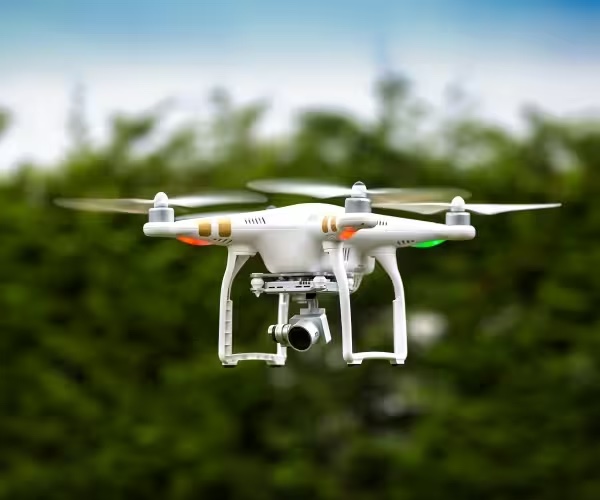Drones Deliver Defibrillators Faster Than Ambulances

Dreamstime
From Newsmax
Drones can more quickly deliver defibrillators to the scene of a cardiac arrest than can ambulances, a new Swedish study has found.
More than two-thirds of the time, a drone equipped with an automated external defibrillator (AED) reached the patient an average of 3 minutes faster than an ambulance, researchers report in The Lancet Digital Health.
“The use of an AED is the single most important factor in saving lives,” said principal researcher Andreas Claesson, an associate professor at the Karolinska Institute’s Center for Cardiac Arrest Research in Stockholm.
“We have been deploying drones equipped with AED since the summer of 2020 and show in this follow-up study that drones can arrive at the scene before an ambulance by several minutes,” Claesson said in an institute news release. “This lead time has meant that the AED could be used by people at the scene in several cases.”
Although an early shock with a defibrillator can dramatically increase the chance of survival for a person in cardiac arrest, they often aren’t available on the scene, researchers said in background notes.
More than 350,000 cardiac arrests occur outside a hospital each year, and the survival rate for these events is only about 10%, the American Heart Association (AHA) says.
A person’s chances of survival can as much as triple if they receive immediate CPR, including the use of an automated defibrillator if needed, the AHA says.
To shorten the time to defibrillation, Karolinska Institute has been leading efforts to send out an AED-equipped drone at the same time an ambulance is alerted. The project covers an area in western Sweden with about 200,000 people.
In the study, drones delivered in AED in 55 cases of suspected cardiac arrest. Drone delivery took place ahead of an ambulance arriving in 37 of those cases, about 67% of the time, with an average lead time of more than 3 minutes.
In 18 cases of actual cardiac arrest, the caller managed to use the AED in six cases, or about 33% of the time. The automated device recommended a shock in two cases, and in one case the patient survived.
“Our study now shows once and for all that it is possible to deliver AED with drones and that this can be done several minutes before the arrival of the ambulance in connection with acute cardiac arrest,” Claesson said. “This time saving meant that the healthcare emergency center could instruct the person who called the ambulance to retrieve and use the AED in several cases before the ambulance arrived.”
Another study presented at the American Heart Association’s annual meeting earlier this month also showed the potential of drones to deliver AEDs to cardiac arrest victims.
The five-minute response time for AED arrival at a cardiac arrest improved from 24% to 77% for urban areas and 10% to 23% for rural areas, according to a computer simulation of 19 counties in North Carolina.
That analysis included nearly 9,000 out-of-hospital cardiac arrests that occurred in those counties between 2013 and 2019 — more than 5,700 in urban areas and around 3,200 in rural areas.
© HealthDay
For more on this story go to: NEWSMAX





